Matador Network's Blog, page 1215
November 26, 2018
Best bar according to bartenders

People travel for all kinds of reasons. Some like to hike breathtaking trails; others are searching for the world’s best cup of coffee. For people in the bar and restaurant industry, one of the top reasons to travel is to visit iconic bars.
We caught up with eight people in the industry — bartenders, managers, and brand ambassadors — to learn what bar they would travel around the world to visit. Go ahead and add these places to your must-visit list.
1. Café No Se in Antigua, Guatemala

Photo: Café No Sé/Facebook
“Without hesitation, I would travel to Café No Se in Antigua, Guatemala,” Rael Petit, the beverage director at The Williamsburg Hotel in Brooklyn, says. “The bar is a dive, known for being the birthplace of Ilegal Mezcal, a small batch, artisanal tequila — one of my favorites.”
Café No Se “has a special place in my heart,” Petit says, thanks to the bar staff, the live music, and a hidden bar in the back for mezcal shots.
2. Liberty Bar in Seattle, Washington

Photo: Liberty Bar/Facebook
“One bar that I would travel across the world to visit is Liberty Bar in Seattle,” Joseph Bennett, the bar manager at Fine & Rare in New York City, says. “Not only do they have some of the best sushi in the city, they have a top-notch spirit selection and some of the best cocktails in the country. All this is set in the backdrop of a hole-in-the-wall, rock-and-roll bar on a quiet street on Capitol Hill. No matter how busy it is, you feel like you’re in a hidden gem. The staff is friendly, educated, and always ready to geek out about all things spirits.”
Bennett also adds, “If you find grunge romantic, you might meet your future spouse on the bar seat next to you.”
3. Dukes Bar in London

Photo: Dukes Bar/Facebook
“There’s something magical about being served by a living legend with decades of experience,” Anthony Bohlinger, a brand ambassador for Sailor Jerry, says. For him, that magic is “a classic Martini served in an environment such as Dukes by Alessandro, a man that exudes a class of customer service few can strive for. There is a beauty when you get the right drink by the right human in the perfect atmosphere; it’s a total euphoric experience to have.”
Getting the Dukes Martini right is no small feat, as it’s a drink with a very specific method of preparation.
4. The Little Red Door in Paris

Photo: Little Red Door/Facebook
“I love Little Red Door in Paris and would fly there from New York just for a night of drinks,” Jimmy Swet, bartender and co-owner of JIMMY at The James in New York City, says. “Everything from the entrance in the quirky Marais district to the inventive cocktails contributes to an unforgettable experience. As an artist myself, I love that they present the menu in the form of an art book instead of a traditional list. The cocktails themselves are amazing — very complex, but every ingredient seems to contribute to the drink without adding too much. The bar staff is also extremely confident and professional while still being super friendly and welcoming.”
5. The Devil’s Advocate in Edinburgh

Photo: The Devil’s Advocate Old Town/Facebook
“On a recent trip to the UK and a quick stop in Edinburgh, I found The Devil’s Advocate located down a narrow walkway off the main road,” Cameron Mealey, the manager at Bayside Restaurant in Newport Beach, California, says. “They have more than enough whiskies to keep you there, but it’s their cocktail menu that will have me coming back for more!”
Mealey recommends the Doha Date (Balvenie 12 Year Old, Amaro Montenegro, Arabian dates, and Xocolatl bitters) and the Beet You to Miyagikyo (Nikka From the Barrel Japanese Whisky, Mount Gay Black Barrel, beetroot, lemon, and cucumber bitters).
“The ambience is amazing as well,” Mealey says. “All this talk has me wanting to go back now… excuse me while I look at plane tickets!”
6. Apotek Kitchen & Bar in Reykjavik
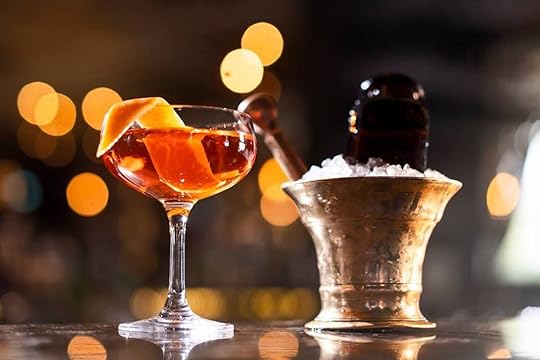
Photo: Apotek kitchen bar/Facebook
Apotek Kitchen & Bar is a favorite of Trevor Schneider, a brand ambassador for Reyka Vodka, “because they go above and beyond delivering a next level of hospitality,” he says. “Some may even call it the Viking Royalty treatment.”
7. Bacchanal in New Orleans
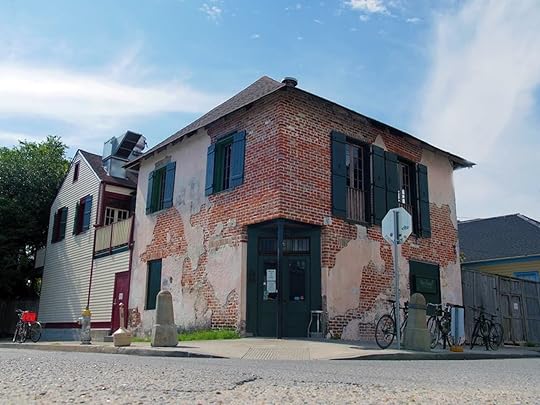
Photo: Bacchanal Wine/Facebook
There are many, many bars to choose from in New Orleans. Some are open 24/7, some are the diviest of the dives, and others specialize in frozen drinks. For Jessica Weinstein, the beverage director for Jamie Leeds Restaurant Group in New England, nothing beats Bacchanal.
Bacchanal “will always be one of the most magical spaces,” Weinstein says. “Every time I go there I’m surrounded by positive people and things I love like music, wine, and cheese.”
It’s truly a bar where you go for the well-curated wine and cheese options and stay for the live jazz.
8. Cheers in Boston
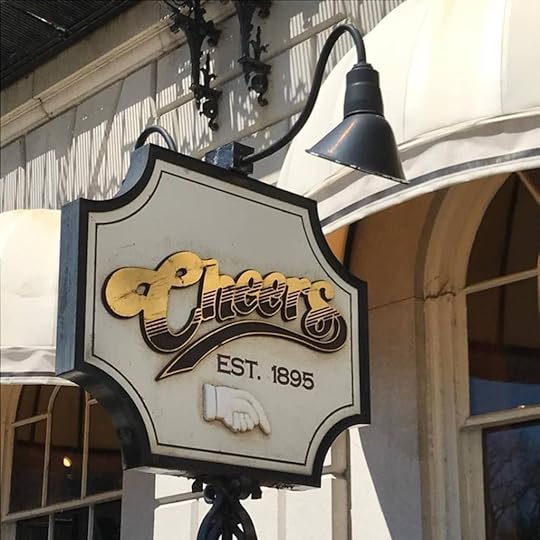
Photo: Cheers Boston/Facebook
Sometimes, all the specialty cocktail menus in the world can’t compete with nostalgia.
“I would definitely travel to Boston for a chance to have a drink at Cheers,” David Crockett, the manager at Bistango in Irvine, California, says. “Growing up watching the iconic show, I think it would be cool to walk into a piece of bartending and TV history.” 

More like this: 9 things a bartender would never be caught dead doing in a bar
The post 8 bartenders on the bar they’d travel the world to visit appeared first on Matador Network.

US map made of song titles
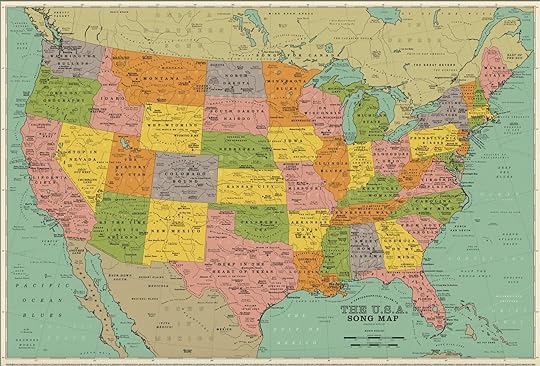
Many cities around the world have a song with which they most identify. A song which — whether because the city is mentioned directly and often, or because there’s a more subtle connection — really calls to mind that city’s spirit, history, or culture (think about Ray Charles’ Georgia On My Mind). That’s why Dorothy, a UK-based design studio, created a map of the United States made up of songs associated with cities, rivers, mountains, highways, and other landmarks. There are over 1,000 songs on the map.

Photo: Dorothy
Many of the map’s song-place associations are relatively obvious, like Straight Outta Compton, Autumn in New York, Sweet Home Alabama, California Dreamin, and so on. Others, however, require a bit more thinking. Dorothy told My Modern Met that “There are specific reasons for the placement of every song on the map…some of our favorite song choices are the ones which require a little extra thought about a possible connection.”

Photo: Dorothy
At the bottom of the poster, Dorothy has included a helpful A-to-Z list of all the artists behind each song. And there’s even a 61-hour-long Spotify playlist if you want to take a truly comprehensive musical journey across the US. For a cross-country road trip, we can’t imagine a better playlist.
The map can be purchased here for $38. 
H/T: My Modern Met

More like this: The 25 coolest towns in America: 2018
The post This map of the US is made from over 1,000 song titles appeared first on Matador Network.

Two pods of pilot whales died

It’s been a tough month for whales. Last week, a dead sperm whale was found in Indonesia with 13 pounds of plastic in its stomach. Now, a staggering 145 pilot whales died on a beach on Stewart Island in New Zealand. Stranded in two pods, about 1.2 miles apart, the beached whales were discovered by a walker late Saturday. Half were already dead when they were found, and the other half, although still alive, were euthanized due to their irreparable condition. According to authorities, that was the most humane course of action.
Ren Leppens, of the regional Department of Conservation (DOC), said in a statement, “Sadly, the likelihood of being able to successfully re-float the remaining whales was extremely low,” due to the “remote location, lack of nearby personnel and the whales’ deteriorating condition.” While strandings are fairly common in New Zealand — there are around 85 incidents a year — most involve a single animal and not an entire pod.
Coincidentally, 12 pygmy whales were also found stranded this weekend off the northern tip of New Zealand’s North Island. Four have died, but a local marine group is attempting to re-float the remaining eight tomorrow.
The DOC isn’t entirely sure what causes whale and dolphin strandings. Possible explanations include illness, navigational errors, falling tides, or being chased out of safe, familiar waters by a predator, though researchers still haven’t come to a definite conclusion. 
H/T: BBC News

More like this: Where to swim with the world’s most amazing marine wildlife
The post 145 pilot whales beached and died in New Zealand appeared first on Matador Network.

Skating trail with tiki torches

This ice skating trail in Northern Ontario, Canada is like a picture-perfect romantic holiday movie set. Arrowhead National Park, located in Huntsville, has a skating trail that puts regular ice skating rinks to shame. Spanning nearly one mile, the winding trail allows guests to skate through the wilderness of the Muskoka Forest.
Unsurprisingly, the trail gets pretty busy throughout the season, but it’s likely to get even busier with the addition of Fire & Ice nights, when the trail will be lined with lit tiki torches.
The Fire & Ice nights begin Monday, December 31st, and run all the way through Saturday, March 9th. The torches are lit from 6:00 PM to 9:00 PM. If you want a slightly less hectic skate, it’s recommended that you visit the park on a Thursday, which tends to be less crowded. Park admission is $17 per vehicle Monday through Friday, and $20 on Saturdays, Sundays, and holidays. If you don’t have your own skates, you can rent them at the park for $10 a pair.
Here is the full list of dates for Arrowhead’s Fire & Ice nights:
Monday, December 31st, 2018
Thursday, January 3rd, 2019
Saturday, January 12th, 2019
Saturday, January 19th, 2019
Thursday, January 24th, 2019
Saturday, February 2nd, 2019
Saturday, February 9th, 2019
Thursday, February 14th, 2019
Saturday, February 23rd, 2019
Saturday, March 2nd, 2019
Saturday, March 9th, 2019

H/T: Narcity

More like this: The 10 weirdest winter sports you never knew existed
The post This ice skating trail is the stuff winter dreams are made of appeared first on Matador Network.

Reggae may soon be part of UNESCO

Reggae is inextricably linked with Jamaican culture, and now that special connection may become official. The country has asked UNESCO to accord reggae a special designation: a spot on the Intangible Cultural Heritage of Humanity list. The list’s purpose is to call attention to the importance of preserving intangible practices and heritages around the world.
Reggae has been hugely popular in Jamaica since the 1960s. It centers around a celebration of “Jah” or “God,” marijuana, and Ras Tafari, a former Ethiopian emperor who Rastafarians hail as their messiah. Reggae music, often considered to be therapeutic, inspired several other musical genres, including dancehall, reggaeton, and reggae fusion. It has also been an important influence on hip-hop.
UNESCO will announce on Monday whether reggae will be awarded this designation. Olivia Grange, Jamaica’s culture minister, said that “It will be a major achievement for Jamaica if we are successful in having the designation declared by UNESCO.” There are currently 470 cultural elements on the list from 117 countries, and UNESCO is determining this year’s additions from Monday, November 26th through December 1st. 
H/T: The New York Times

More like this: 8 of the most underrated UNESCO sites you need to visit
The post Jamaica applies for a UNESCO cultural designation for reggae appeared first on Matador Network.

Leaning Tower of Pisa straightening
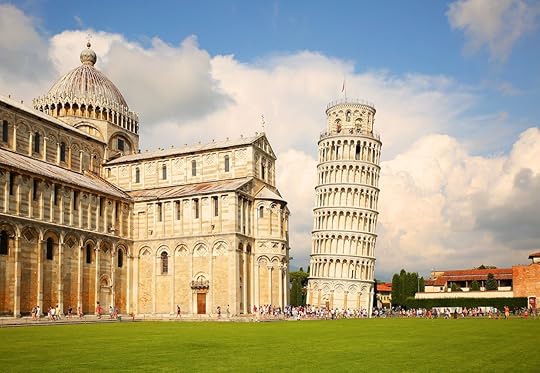
The Leaning Tower of Pisa in Italy might lose its claim to fame…in a couple thousand years. The tower known worldwide for its iconic tilt has actually been straightening out over the past two decades. It’s now leaning about an inch-and-a-half less than it was 20 years ago.
Concerns over the tower eventually collapsing have always been prevalent. The tower started tilting almost immediately after its construction in 1173, though it hasn’t actually been in danger of collapse until 1990, when it was closed for 11 years for restoration. The project included attaching braces and weights to the structure, as well as removing soil from one side, to encourage straightening. Now, however, it’s projected to become so stable, its famous tilt may look slightly less dramatic.
Its ability to withstand time and the elements, while retaining its patented tilt, is considered nearly miraculous. Attempting to explain the phenomenon, George Mylonakis, civil engineering professor at Bristol University, told CBS News, “The walls are particularly thick and so the whole structure is very stiff,” which may be the reason why the structure remains standing despite many strong earthquakes.
Don’t worry, though. You’ll still be able to take a “pretending to hold up the Leaning Tower of Pisa” picture on your next trip to Italy. At this rate, it would take thousands of years for the tower to completely straighten. 
H/T: CBS News

More like this: We finally know why the Leaning Tower of Pisa has not toppled over yet
The post The Leaning Tower of Pisa is slowly straightening appeared first on Matador Network.

What bartenders learn on holidays

For some bartenders, it’s a huge sacrifice to work on holidays, and for others, it’s a welcome excuse to skip out on family drama. Regardless of where you stand, all bartenders must pay their dues and clock in for a holiday or two. Here are seven lessons bartenders have picked up from working holidays.
1. Prepare for the strange.
Around holidays, there is a dramatic redistribution of clientele. Most of the “normals” go on vacation, visit family, or host parties, so you’re left with a blend of service industry people, tourists, and weirdos. Social interactions take on a different rhythm. It’s all very David Lynch.
2. You must emotionally distance yourself.
When you know you’re going to be working on a holiday, it’s important to mentally treat it like any other day. Turn your phone off — it’s best to avoid potential FOMO. Working holidays isn’t as bad if you approach it with a “well, we’re stuck here, but let’s make the most of it” vibe. Once you start jonesing for eggnog and It’s a Wonderful Life, you’re a goner.
3. It will still get emotional.
That being said, holidays still trigger emotions, often unexpectedly, and there’s only so much you can control. Bar guests will run the gamut from uptight and stressed out to cutting way too loose. It’s your job to help counteract the holiday blues and to oversee the bacchanals. Add to it your own emotional roller coasters, as well as those of your co-workers’, and odds are that you or someone you know will end up crying over their beer by the end of the night.
4. Deep bonds are forged in the holiday trenches.
Few things bond co-workers like sharing a drink at a shitty dive bar after a slammed holiday shift. Like it or not, your co-workers are your family.
5. You will piss off loved ones.
No matter how long you work in the service industry, your mom will never fully understand why you couldn’t get your Christmas shift covered. Boyfriends/girlfriends, husbands/wives, best friends, and roommates will take turns chewing you out for missing birthdays and bridal showers. Try your best to make every other invite, but at the end of the day, if you don’t work, you don’t get paid.
6. Every restaurant or bar should close one day a year.
Thanksgiving or Christmas are good options, but it could be another day, depending on the traffic patterns of the bar. Owners may lose some money, but it’s worth it for staff morale. Perhaps, pick your slowest day of the year and close for a staff party. There’s something very special about being able to spend time with your co-workers when no one has to work. And when you spend your life serving others, it’s essential to take time to honor the work that you do.
7. It’s feast or famine.
Are you a bartender at a sports bar on Valentine’s or a bespoke cocktail spot on Super Bowl Sunday? Depending on the holiday, your bar will either be slammed or empty, and that’s just the nature of things. 

More like this: 7 things bartenders do that piss off their non-bartender friends
The post 7 things bartenders learn from working holidays appeared first on Matador Network.

17 beautiful images of Samoa

If “Garden of Eden” vibes are what you’re aiming for on your next vacation, add Samoa to your list. It’s lush and exotic, sure, but it’s about as “middle of nowhere” as anywhere can get, too — set in the turquoise expanse of the South Pacific, it’s 3,500 miles from Australia and nearly 5,000 miles from California. The nation’s two main islands remain off the radar of most travelers — but after checking out these images, you might not be one of them for long.
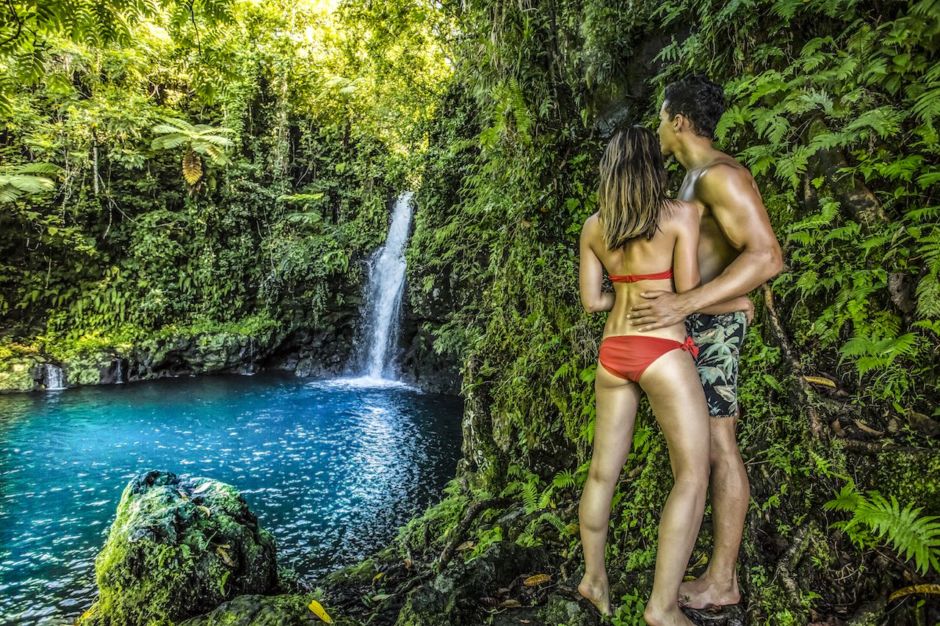
1
Afu Aau Waterfall
Savai'i, the larger but less populous of Samoa's two main islands, is waterfall central. The Afu Aau Waterfall—also known as Olemoe Falls—tumbles out of the rainforest into a deep emerald pool, where the water divides into three and then goes for yet another plunge toward the Pacific. This landscape would be remarkable anywhere else, but you'll find spots like it all around Savai'i.
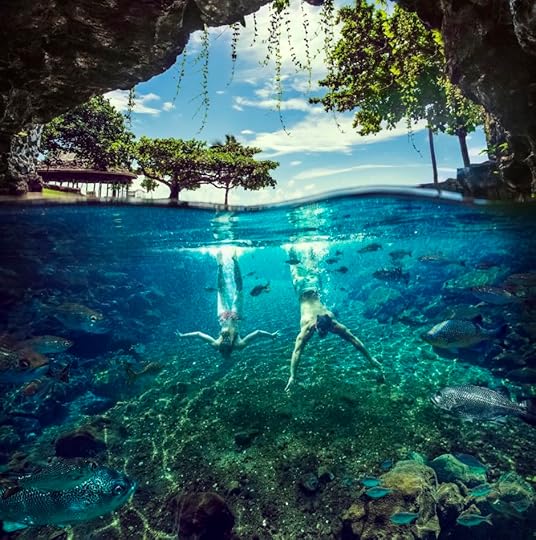
2
Piula Cave Pool
The Samoan islands are volcanically formed, and lava has done some incredibly cool things here. Case in point? The Piula Cave Pool, less than an hour's drive from the capital city of Apia on the other main island, Upolu.

3
Tatau, Samoa Cultural Village
Tatau, or tattoo, is an incredibly important part of Samoan—and larger Polynesian—culture. Ancient symbols are still used today, and new generations are finding pride in continuing the old, old, old traditions of their homeland. Apia's Samoa Cultural Village is a good place to explore this incredible art form.
Learn more: Fa'a Samoa - Samoan Culture

4
Alofaaga Blowholes
Move over, Shamu. The Alofaaga—or Taga—Blowholes are some of the most powerful on Earth. Every few seconds (that is, with every wave) water comes funneling up these sea tubes, powering blasts of spray hundreds of feet into the air. Come at high tide, and you'll get soaked (it's a good thing). Note: Don't be surprised if you see coconuts flying through the air. Locals sometimes throw them in for effect.

5
Fuipisia Waterfall
This waterfall is literally in someone's backyard in Lotofaga, Upolu (the owners welcome visitors). And to think we were told a white picket fence was the dream!

6
Le Lagoto Resort, Savai’i
"Le Lagoto" is Samoan for "sunset," and the ones you'll catch at Le Lagoto Resort (a boutique property with 10 right-off-the-water bungalows) are pretty spectacular.
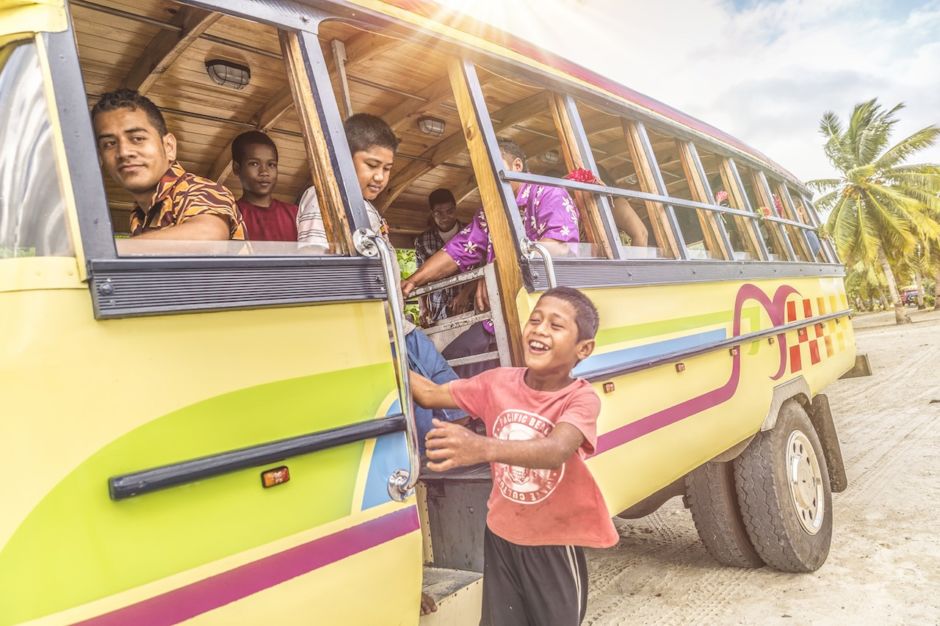
7
Savai’i's Local Bus
There are plenty of ways to get around Savai'i, but taking the bus might be the most memorable. You'll find stations behind most of the larger markets, and routes run all around the island.

8
Lalomanu Beach
White sand, a translucent lagoon full of tropical fish—Lalomanu Beach, one of the easternmost points on the island of Upolu, is widely regarded as one of the most "pristine" beaches around. Look for the green sea turtles!
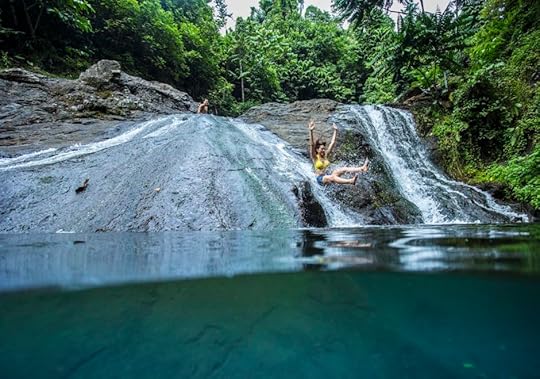
9
Papaseea Sliding Rocks
A 15-minute drive from the capital city of Apia are the Papaseea Sliding Rocks, basically two small waterfalls that flow over smooth stone. One is for kids, the other for adults, and both put the plastic waterslides of your childhood to shame.
Plan your trip: Search Activities in Samoa

10
'Ava Ceremony
When you're here, you should definitely check out an 'Ava Ceremony, one of the most important Samoan rituals. It centers around the passing of 'ava (the ceremonial beverage you might better know as kava) and is held during most significant events in Samoan life.
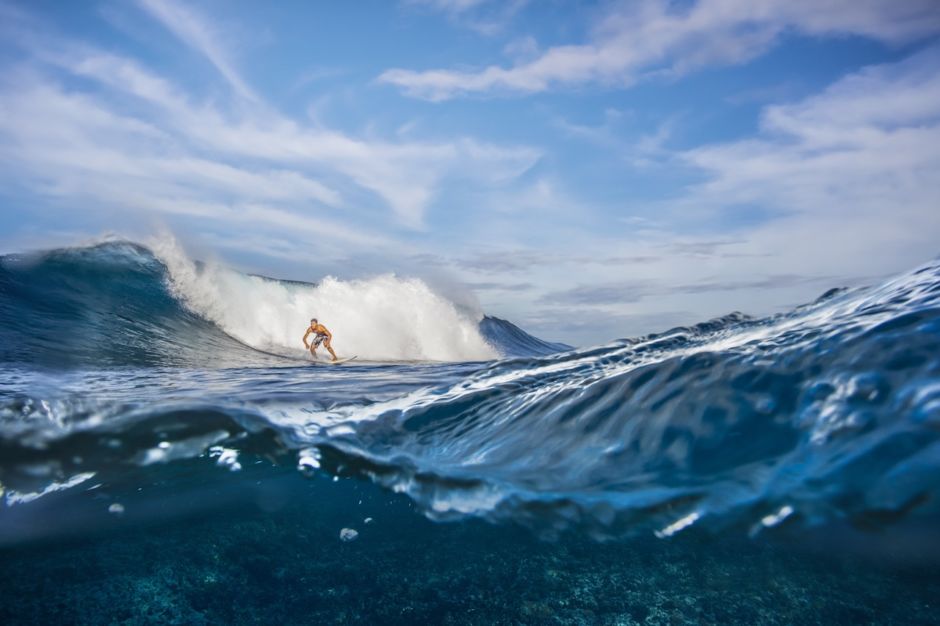
11
Aganoa Lodge, Savai’i
Aganoa Lodge on Savai'i offers fully guided surfing experiences right outside their door—that is, if you're looking to leave your open-air bungalow.

12
Fire Knife Dance
Chill on the beach at the Return to Paradise Resort long enough, and eventually the sun and waves turn to moon and fire. The fire knife dance is another cultural highlight you can plan to witness on the islands.

13
To-Sua Trench
Two giant watering holes joined by a lava tube? That's Upolu's To-Sua Trench, and the diving board doesn't hurt the appeal. It's 90 feet deep, so work on that backstroke!

14
Paddling in Fagamalo, Savai’i
You can paddle lots of places in Samoa, but Fagamalo, on the island's northernmost point, is hard to beat. Bonus points if you try out a traditional Polynesian outrigger canoe.

15
Falealupo Rainforest Preserve
The Canopy Walkway in the Falealupo Rainforest Preserve will take you 120 above the forest floor. You'll walk among the treetops and the hundreds of different species that call this preserve home—one that will be most noticeable is the giant, giant banyan tree, to which your ropes are anchored.
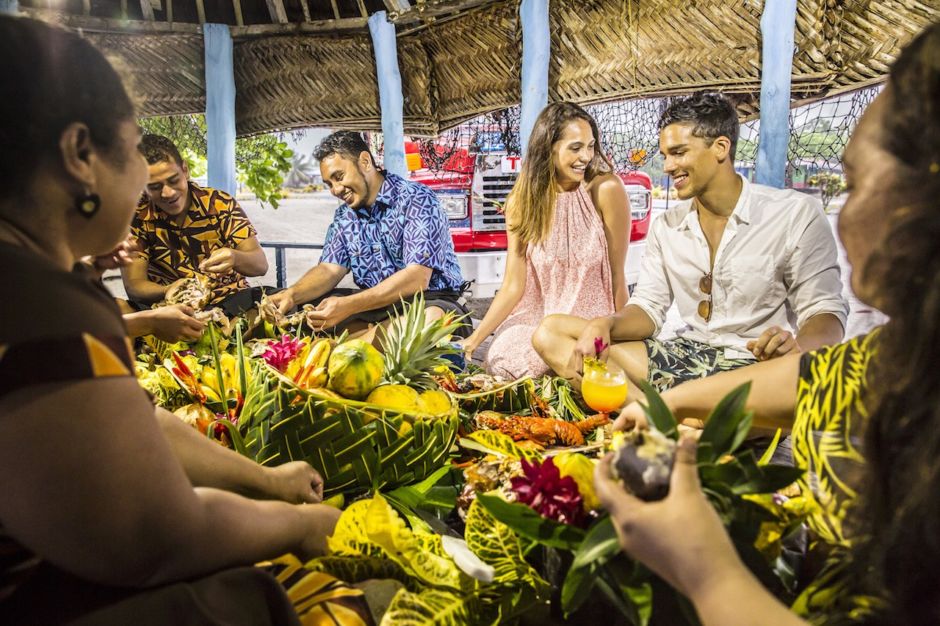
16
Traditional Banquet on Savai’i
All of a sudden, that cruise-line buffet seems shameful.

17
Vavau Beach
One of Samoa's many, many idyllic beaches, this one adjacent to the aforementioned To-Sua Trench. Yep, the colors are real.
The post 17 images that will make you plan a trip to Samoa NOW appeared first on Matador Network.

November 23, 2018
Dutch winter food
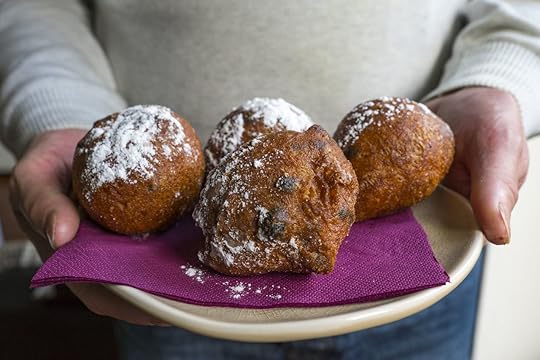
Unlike its neighbors to the north, the Netherlands doesn’t become a picturesque snowy wonderland in the winter thanks to a relatively temperate climate. Without the wintry weather, the Dutch rely on other means to make the season feel festive. One of the main ways is through food. There are limited-release gingerbread snacks, fried dough covered in powdered sugar, and a long list of savory, heartwarming meals. These are the uncomplicated winter Dutch foods that you need to know.
Pepernoten

Photo: Sam Frank/Shutterstock
Literally translated as “pepper nuts,” pepernoten are small, gingerbread-like cookies. They’re only available in the fall leading up to the celebration of Sinterklaas on December 5th. After that, they abruptly disappear from store shelves until the next year.
There are several kinds of pepernoten. There’s the classic kruidnoot, which are small, round gingerbread cookies roughly the size of a bottle cap. Kruidnoots also come covered in either milk, dark, or white chocolate. Recently, there’s been an increase in “artisanal” pepernoten with a variety of different flavors. A company called Van Delft Biscuits sells flavors like truffle, tiramisu, and buttered popcorn from pop-up stores in the days leading up to Sinterklaas.
Oliebollen

Photo: Jarretera/Shutterstock
When the days get short, oliebollenkramen (oliebollen food stalls) pop up like mushrooms. Oliobollen are fried balls of dough (the name translates to “oil bulbs”) that are usually lightly dusted with powdered sugar. While oliebollen are available from pop-up stands all winter long, they’re traditionally eaten on New Year’s Eve.
No one knows exactly why oliebollen became the food of choice to ring in the new year. One theory is that in pagan times, it was believed a spirit named Perchta sliced open people’s stomachs to eat what they had eaten. The oily oliebollen made Perchta’s sword bounce or slide right off. Another origin story dates back to Jewish refugees fleeing Portugal who brought the food to the Netherlands in the early 1500s. Regardless of origin, the tradition has been going on for centuries. Today, the average Dutch person eats eight oliebollen per person, per year.
Oliebollenkramens also sells other things like krentenbol (oliebol with raisins), appelflap (crispy fried apple rings), Belgian waffles, and oliebollen filled with custard, Nutella, or fruit.
Poffertjes

Photo: MrLeefoto/Shutterstock
Poffertjes are perhaps the most uniquely Dutch sweet treat. About the size of a muffin top, these tiny pancakes are made with buckwheat flour batter and topped with something sweet. Poffertjes are cooked on a special griddle to keep them golden and fluffy.
Then there are the toppings. The default poffertjes topping is one of the best: melted butter and powdered sugar, eaten with a toothpick that has a Dutch flag on it. You can also get toppings like Nutella, syrup, fruit, or a liqueur like advocaat (somewhat like Eggnog) or Baileys.
Like oliebollen, you can get poffertjes at a stand. But what’s really fun is eating them at the poffertjessalon. These kitschy, temporary restaurants are a warm and cozy place to get out of the cold and enjoy some seriously good pancakes.
The holy trinity of winter foods

Photo: AS Food studio/Shutterstock
There are three sacred pillars of Dutch winter food: potato, vegetable, and meat. These three elements make up the traditional, everyday winter meals that the Dutch have been eating since the introduction of the potato to Europe around 1600.
Stamppot is one of the oldest traditional Dutch dishes. Often described as the Dutch national dish, stamppot is made up of kale and potatoes mashed together and served with rookworst (smoked sausage) on top. The most iconic rookworst is the kind you get from the Dutch store chain HEMA.
Other vegetables you can mash in with potatoes include carrots and onions (called hutspot), endive, sauerkraut, and sweet braised red cabbage. If you’re not in the mood for rookworst, you can also have meatballs or some other kind of sausage on the side. And don’t forget the gravy!
Ewertensoep (Dutch pea soup) is another typical winter dish that fits into this holy trinity category. Made with dried split peas, carrots, and starchy celery root, a Dutch pea soup is considered done when you can stick a spoon in it and turn the pot over without the spoon falling out. To serve, throw in some crispy bacon or, you guessed it, rookworst.
Gourmetten and stoofperen
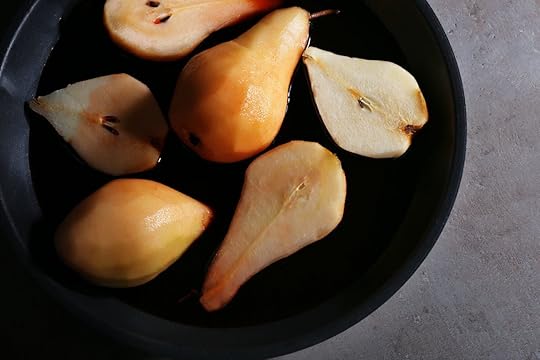
Photo: Africa Studio/Shutterstock
In contrast to the Holy Trinity Foods, gourmetten is something you do on special occasions. The tradition is to get together with friends or family, usually on Sinterklaas or Christmas, and you cook your own meat and vegetables on a long tabletop grill. Then, while you’re eating the first round, you have a second round already cooking. This can go on for hours, and is an event in itself.
In December, all Dutch supermarkets will offer bite-sized packages of meats, sausages, fish, and vegetables like peppers, mushrooms, and onions. A selection of creamy sauces and mayonnaise will also be present on the table to accompany the meal. Slices of crusty bread with smeerkaas (spreadable goat cheese) and kruidenboter (butter with herbs and garlic) will also be available.
To end your gourmetten session, you may have stoofperen. These are pears braised in red wine, sugar, and spices, served either cold or warm with a scoop of vanilla ice cream. 

More like this: Everything tourists miss when they come to Amsterdam
The post The sugar-coated, crispy-fried, deeply comforting guide to Dutch winter food appeared first on Matador Network.

Traditional breakfasts around world
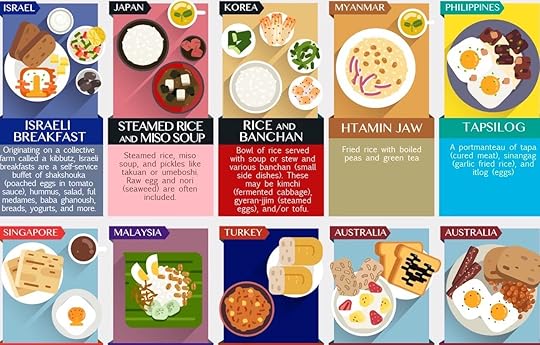
Breakfast is the most important meal of the day, but that meal looks vastly different depending on what country you’re in. Whereas a typical breakfast in the United States might look relatively basic, consisting of scrambled eggs, cereal, or a bagel, breakfast in Colombia is notably heartier — a heavy soup made from milk, eggs, and potatoes. Created by Mattress Clarity and posted by Redditor IrwinRSchyster1, this chart shows the most popular breakfast foods in countries around the world.

Photo: Mattress Clarity
Click here to zoom in.
Some countries clearly value a healthy breakfast more than others. Switzerland, for example favors nutritious muesli — raw rolled oats mixed with grains, dried fruits, seeds, and nuts. In Spain, however, people eat chocolate con churros — doughnut-like fritters dipped in a thick hot chocolate. Bulgaria also prefers a substantial meal to start the day with banitsa, a pastry made by layering whisked egg and cheese between filo pastry.
Some of the more unexpected preferences include Jamaica’s ackee and catfish — salt cod sauteed with oiled ackee, onions, peppers, and tomatoes, and served with fried plantains. In Ghana, you’ll find a dish called ampesi, which might look more appropriate on the dinner table at Christmas. It consists of boiled yams, plantains, and a stew with spicy spinach gravy, onions, and fish. 

More like this: The absolute best breakfast spots in New York City
The post The favorite breakfast dishes of 50 countries around the world appeared first on Matador Network.

Matador Network's Blog
- Matador Network's profile
- 6 followers



